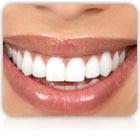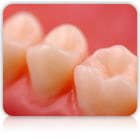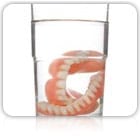The landscape of modern dentistry has evolved significantly, with a strong emphasis on comprehensive restorative dentistry that addresses the most common oral health problems while delivering natural-looking and aesthetically pleasing results.
This article delves into the realm of restorative dentistry, shedding light on its intricate procedures, the pursuit of excellence, and the evolving dynamics of oral healthcare.
The Intersection of Functionality and Aesthetics
Restorative dentistry, a fundamental pillar of general and family dentistry, has transcended conventional boundaries. It’s no longer confined to merely treating dental ailments but extends its reach to enhancing the overall oral appearance.
In the contemporary era, restorative procedures are meticulously designed to harmonize functionality with aesthetics, ensuring that the end result not only feels natural but looks impeccable.
While many dentists offer restorative services, a significant distinction emerges when it comes to the quality of care provided by a seasoned cosmetic dentist. These specialists bring an added layer of finesse to their work, striving to elevate the patient’s visual appeal while rectifying oral health concerns.
Understanding Restorative Dentistry
Restorative dentistry is a multifaceted discipline that encompasses the diagnosis and treatment of conditions affecting the teeth, gums, and maxillofacial region. It addresses an array of oral health problems, making it an integral part of comprehensive dental care. The core objective is to rehabilitate and restore the functionality of teeth while ensuring a natural and visually pleasing outcome.
The following is a list of common general restorative procedures.
Dental Crowns

Crowns are used to cover damaged, cracked, chipped teeth, or to generally restore teeth. When cemented into place, they fully cup over the portion of a tooth which lies at and above the gum line.
Dentists will match the color of your teeth to give you a natural look and feel.
Crown & Bridgework

A dental bridge is a custom device anchored to neighboring teeth that replaces one or more missing teeth. A tooth or teeth replaced with bridgework are replaced by a natural-looking prosthetic (replacement) that is held together by the teeth on either side of the missing one(s).
Crowns and bridges are most commonly prepared from high-quality materials such as semiprecious or precious metals, porcelain, or a fused combination of the two. Your dentist will take into account esthetics, function and tissue compatibility when selecting the material most suitable for your teeth.
Esthetic Fillings

Teeth fillings are utilized using the most modern advancements in dentistry. The exact placing of modern composites allows the tooth to be as close as possible to its original strength in the most conservative fashion.
Modern dental technologies use composites of a very hard “plastic” that bonds (micromechanically fuses) to the tooth to hold the tooth together. The use of amalgam fillings has been replaced with these plastics as some dentists believe that amalgam fillings expand and contract with hot, cold and biting.
Some believe amalgam technology can lead to teeth that are weakened with every meal and that are susceptible to fracturing. Amalgam also contains mercury, a toxic element that is released from the fillings that have uncertain effects on the entire body.
Air Abrasion and Micro Dentistry

Air abrasion technology uses a fine powder called aluminum oxide under air pressure to blast out small cavities in teeth without the need for anesthetic or needles. Modern dentistry utilizes conservative treatment options for decay removal in teeth and avoids the use of needles and drills to remove decay and conserve “healthy” tooth structure.
Through the use of newer more conservative options such as air abrasion, your dentist can remove small cavities in teeth without removing the solid, healthy tooth enamel – and then place white fillings, often without using the dreaded needle.
Cosmetic Dentures

Dentures are a common restorative device used to replace missing teeth for people with no teeth. They can also be used in mouths where several teeth need to be replaced.
These types of dentures are called partials and are also a popular alternative for those who wish to conserve existing healthy teeth. Dentures allow for the ability to chew and bite properly and prevent a sagging facial appearance.
